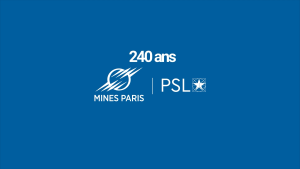



 Lecture
Lecture
Bio-based aerogels: new eco-friendly porous materials for thermal insulation and controlled release
We discuss applications of Cahn-Hilliard diffuse interface models solid and fluid mechanics. Coupling with simple models is considered is some detail: first with elasticity, then with Newtonian fluid. Salient features of such coupled systems are discussed and the emphasis is on mathematical and numerical aspects. Cahn-Hilliard equations for conserved phase fields are 4th order diffusion PDEs. Convergence of the standard Galerkin FEM requires that the interpolation functions belong to a higher continuity class.
For diffusion controlled, solid state phase transformation in binary alloys, coupled with elasticity of the solid phases, a Galerkin finite element formulation is developed, with mixed-order interpolation. We then consider morphological instabilities in binary multilayers and the post-instability evolution of the system. Maps of evolution behavior are developed in the parameter space of relative thicknesses of initial phases. The relative importance of elastic and chemical energy of the system is discussed and maps are developed for different cases. Depending on the initial configuration, the final equilibrium varies, but even greater variety is observed in evolution paths. Post-instability evolution cannot be reduced to the one-dimensional model.
In fluid mechanics (work in progress), we consider the problem of wetting and motion of the triple line for liquid metals on inert metallic substrates with application for brazing/soldering. Standard, sharp interface models produce singular solutions if no-slip boundary conditions are imposed. However, MD simulations indicate diffusive motion of the triple line, and the phase field model is a natural way for representing such phenomena. The nature of interface stresses is discussed. Experimental and preliminary computational results are presented.
Grain boundaries act as obstacles for dislocation motion (Hall-Petch effect). They can be modeled phenomenologically by interface models in gradient plasticity. These models are compared to a pile-up model in the spirit of Eshelby et al. (1951). A relation between the relevant grain boundary stresses of both theoriesestablished.
This relation illustrates the incompatibility of the models: usually, gradient models can not be expected to yield the typical Hall-Petch relation (the yield stress increase scales inverse with the square root of the grain diameter). This is verified by three-dimensional FEM-simulations of a distinct plastic strain gradient model including several hundred grains.

Ecole
240 ans de recherche et de formation
Vidéo : 240ans de recherche…
> En savoir +
Recherche
Prix Jean Mandel 2023 mécanique des matériaux
Le prix Jean Mandel décerné tous les…
> En savoir +

Formation
Samuel Forest, élu membre de l’Académie des…
Samuel Forest lors de sa réception à…
> En savoir +

Formation
Mines Paris plébiscitée par ses étudiantes
Mines Paris - PSL, une école qui répond…
> En savoir +

Formation
Femmes de science
Chercheuses confirmées, doctorantes, élèves ou alumni,…
> En savoir +

Formation
Quelle école d’ingénieurs a le…
Mines Paris - PSL au Top 5 du classement LinkedIn 2023…
> En savoir +
